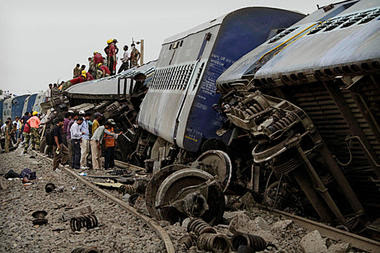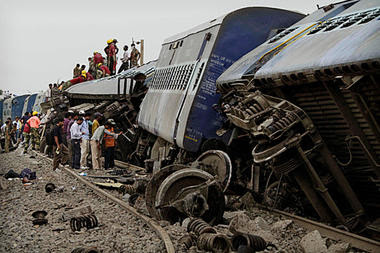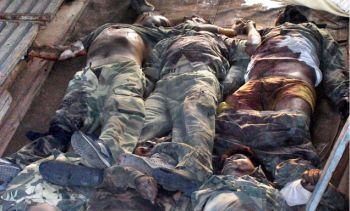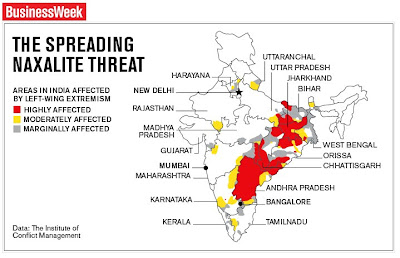Save the Grand Old Tree @ the Court Premises
Message from the Congress Plenary Session

The offer from Dr. Manmohan Singh to appear b4 PAC is just political skulduggery to deviate attention from the larger issue of political & policy manipulation by the privilegd for their benefit. The 83rd Plenary sesion of the Ruling Party had nothng to offer for the mases of India. With not a word about spiralng prices, Petroleum price-control other than the rhetoric about Hindutva terror, aimed only to support RAHUL_LEAKS
Spreading paranoia to market pesticide
Ilachuruttippuzhu is the buzz word in Malayalam Media today. Our news
papers and visual media are flooded with reports about this monster
worm spreading havoc in paddy fields across Kerala, giving an
impression that it is the single largest threat faced by out
agricultural sector. Statements from officials of our agriculture
department add fuel to fire. But is this worm such a grave threat?
Investigations by GREENPEOPLE reveal the other side of the story.
The worm known locally as Ilachuruttippuzhu is not a new phenomenon.
For decades farmers have been dealing with the worm successfully with
traditional methods. Now what is being done is forcing the ignorant
farmers to buy high-cost pesticides to fight this threat. The process
is not only unscientific but also poses a danger of exposing those who
consume the agriculrural produces to lethal poisoning. The psticides
used here are systemic chemical pesticide which can cause many health
problems to human beings if consumed. The danger is these chemicals
are used as preventive measure too.

Firstly there is no medicine or chemical that could be used to prevent
these worms from entering paddy fields. So using them as preventive
measure can only expose the paddy fields to unwanted toxins. Secondly
these chemicals cannot cure the already infected plants but can only
stop the next generation of worms. So spraying these pesticides
doesn’t help much. Traditional methods like Basket Traps spraying
kerosene in the water logged paddy fields etc could yield better
results and there is little risk of poisons. Thirdly experts say that
food products should not be used within two months from the day of
spraying those pesticides. This would not be possible in case of paddy
fields and the result would be disastrous.
It is time that the public know about the aggressive marketing
strategies of these poison production firms and the way in which the
Department officials dance to their tune and exaggerate the presence
of these worms. By spreading paranoia the official-corporate nexus is
tricking the media and the public to use the hazardous chemicals.
A Bill to Protect WHISTLE BLOWERS?
Union government moots a bill to 'protect' whistle blowers, but in effect it could well be a bill to protect against whistle blowers. The bill stipulates that the "disclosure" by defeinition is a complaint relating to an offence under the Prevention of Corruption Act, 1988, or against wilful misuse of power or discretion by a public servant (that is, it has to be shown that the public servant wilfully misused his or her power or discretion, as if misuse of power or discretion could be unintentional, too). Thirdly, such misuse should have caused demonstrable loss to the government or helped the public servant to accrue demonstrable gain. putting such near impossible conditions can only deter a whistle blower. Moreover it stipulates a prison term, which may extend up to two years, and a fine, which may extend up to Rs.30,000, for persons who make vexatious and frivolous complaints rather than giving some awards or any kind of complements for the whistle blowers. It also excludes Corporates, Army, intelligence agencies and many pther personnel from the purview of the bill.  Against our expectations the bill also intend to reveal the identity of the whistle blower.
were the intentions of the Government real it could have reffered to similar laws in countires like, US, UK, South Africa or Khana where Army too comes aunder the law. There they provide for many complimentary benefits for Whistle blowers including the one's from Corporate world and also provide with efficient safeguards.
THE BILL BUT FOR ITS NAME (Public Interest Disclosure and Protection to Persons Making the Disclosure Bill, 2010) COULD WELL BE AN INSTRUMENT AGAINST WISTLE BLOWERS.
Against our expectations the bill also intend to reveal the identity of the whistle blower.
were the intentions of the Government real it could have reffered to similar laws in countires like, US, UK, South Africa or Khana where Army too comes aunder the law. There they provide for many complimentary benefits for Whistle blowers including the one's from Corporate world and also provide with efficient safeguards.
THE BILL BUT FOR ITS NAME (Public Interest Disclosure and Protection to Persons Making the Disclosure Bill, 2010) COULD WELL BE AN INSTRUMENT AGAINST WISTLE BLOWERS.
read more from P B Jijeesh at pbjijeesh.in
The Left-Extremist Threat
‘The Inhuman Cult of Death’ and Dilemma of the Civil Rights Groups
“ A movement carried out in the name of India’s poor has, for all practical purposes, degenerated into an inhuman cult of death” read the editorial that The Hindu carried on the day after the recent train sabotage allegedly by the Maoists in Jhargran in West Midanpur district of West Bengal. The heinous incident which took the lives of 141 people, pose challenging questions before the civil society and those who sympathise with the Maoist cause. With the opinions for stringent action against Maoists is aired with little thought (say, about what the word stringent-action means) we are in a dilemma. Strong back of the scene acts are on for carrying forward the plans for military action against those who wage ‘war against our nation’. The home minister has called upon the Civil Rights groups and the ‘intellectuals’ to condemn ‘the deliberate, heartless violence’. And this could be a turning point in the nation’s long history of fight against left-extremism.

The recent surge in the Maoist violence has resulted in erosion of whatever credibility or moral justification it had in the minds of the people of the Indian mainland. In the last three months the Maoists targeted rail-transport for 16 times and 150 innocent civilians got killed. If CPI (Maoist) leader Muppala Laxman Rao apologised for the death of 14 adivasis when they blew up a bus in Warangal in 2002 his comrades in 2010 are trying to justify civilian causalities as unavoidable. It is quite interesting to see global capitalism and left extremism using the same phrase ‘collateral’ damage to cover their guilt. The Maoist movement is gradually turning out to be another bloody game of futility. The violent methods of the Maoists are condemned widely, Arundhathy Roy recently described it as” absolutely inexcusable and cannot be justified”. Dr. Binayak Sen, doctor and activist who was sentenced for 2 year imprisonment for alleged links with Maoists also expressed disapproval and extreme contempt. PUCL after the Maoist attack on the CRPF personnel came out with a statement condemning the Maoists. In a statement it expressed that the PUCL “feels that no objectives could be desirable that is sought to be achieved at the cost of human lives and security. As is evident from the past experience, dialogue remains the most potent and viable means of lasting peace”.
In the meanwhile the story of train tragedy is turning upside down with the Railway Minister Ms. Mamta Banerjee expressing doubts about a conspiracy behind the incident and demanding a CBI enquiry. The People’s Union for Civil Liberties (PUCL), has denied any involvement in the incident. The West Bengal state government was quick to blame it all on the Maoists and the state has already started a CID inquiry into the incident. The FIR filed by the Engine Driver, B K Das, made no mention of the Maoists behind the accident. With so many theories swirling around, a factual account of the incident is yet to come.
What all are waiting for is the Government’s response. With lack of unity on the counter-insurgency strategy within the cabinet already gone public the government is under immense pressure to do something. The earlier responses from the government was cautious as even the Union Home Minister, P Chidambaram a staunch supporter of military action preferring to shelve his usual spit of fire. While condemning the incident we should be careful not to let this as a ruse for witch-hunt. The people’s rights and freedoms cannot be compromised in the name of security when the real reasons remain unattended. With severe pressure from the authorities to show their allegiance to the state the Civil rights Groups and the intellectuals are in a dilemma. The danger of being branded as ‘anti-nationals’ shouldn’t prevent them from carrying forward their present struggles for the poor. The greater issues of exploitation by the Mining giants, land-grab and oppression should not be forgotten. From the part of the government, it should stop the use of civilian transport systems to carry armed forces. Using rail and other civilian transport systems and also occupying schools and other public places for setting up military camps would expose the lives of innocent civilians to grave security threats. Imminent personalities like K PS Gill, former Punjab DGP has pointed out the need for addressing the basic issues like need for hospitals, schools, proper sanitation, land and above all a right to live and die in dignity. “Corruption built into the system which fails to deliver is more destructive than criticism of Civil rights Groups” he said. Another ex-DGP, K S Subramanian was also eloquent when he said, “Chidambaram should read Arundhathi Roy rather than get inputs from the intelligence agencies. He should talk to the Civil rights Groups”.
It is well known that the main stream media is not impartial in its reporting of the ‘Red-Terror’. More often than not they prefer to turn a blind eye towards the atrocities committed by the Salwa Judum and task forces. And independent reporting is factually impossible in Maoist infected stats like Chattisgarh where there are laws like Chattisgarh Public Safety Act in place. At the same time we cannot blame it all on the government itself, but “both Chidambaram and Raman Singh seem to be disciples of Bush. If you are not with us, you are against us”, says Rama Chandra Guha, historian who was included in the fact finding team send to Chattisgarh and was branded as a Maoist sympathizer by the Special forces. That is where the trouble is; there is a tendency to brand everyone who point out faults with the government as anti-nationals. Sadly our mainstream media too takes such a stand. This adds to the dilemma of the civil society. Yet lets hope the society would stand up-to the challenge.
read more from P B Jijeesh at pbjijeesh.in
Cash for Chaos; Tehelka exposure of Sri Ram Sena and Mutalik
FOR THE RIGHT PRICE, YOU CAN GET THE SRI RAM SENE TO ORGANISE A RIOT ANYWHERE. AN EXPOSÉ BY PUSHP SHARMA. WRITTEN BY SANJANA. ADDITIONAL REPORTING BY K ASHISH
THERE ARE 133 videos that show up on YouTube when you search for “Mangalore pub attack”. Over 300,000 people have viewed the first video. Put in the same query on Google and 69,000 websites show up in a fraction of a second. On 24 January 2009, a group of 35-40 men barged into a pub in Mangalore and attacked young women as they enjoyed an afternoon drink. Amongst the attackers were members of Sri Ram Sene — a right-wing organisation that was relatively unknown at the time. The Sene cadres considered women drinking publicly as “indecent behaviour” and more importantly “an insult to Hindu culture and tradition”. Two days after the attack, as India marked 60 years of the Constitution coming into force, national television channels looped footage of women being slapped, beaten and chased out of the pub. (In a telling detail, the footage of the assault was available only because the Sene had informed journalists and photographers in Mangalore of their intended attack 30 minutes before they entered the pub.) The footage sparked outrage. News producers from French, Russian, German television channels despatched correspondents to ground zero. Even producers from The Oprah Winfrey Show called in asking for the footage. The Sene had burst onto the scene. As an organisation, the Sene has always claimed for itself a radical Hindu identity. Its leaders position themselves as zealous custodians of “Hindu religion” and “culture”, its cadres as valiant foot soldiers. In their own words, they will not hesitate to assault people, vandalise property, destroy artistic expressions, separate mixed religion couples — in general, interfere violently — to implement their hardline Hindutva agenda. Their professional calling card is violence justified by a puritanical, spitfire morality. A six-week undercover investigation by TEHELKA, however, reveals that even this violent, spitfire morality can be a hypocritical sham. Sri Ram Sene members are not just committed ideologues who are spontaneously willing to become violent law-breakers for a “cause”. That’s just one of their criminal and negative faces. They are also cynical lumpen that can be bought for a price. “Contract rioting” — thugs being handed out contracts or money to create riots — no longer needs to be a matter of mere speculation. TEHELKA’s investigation shows it is an alarming reality. Vandalism can be purchased; ‘cultural nationalism’ can go on sale. It’s all kosher in the “business” of outrage.
To expose this aspect of the Sri Ram Sene, a TEHELKA journalist posing as an artist met Pramod Muthalik, the president of the Sri Ram Sene, with a proposal. Using the rationale that all controversy is good publicity, he asked Muthalik if the Sri Ram Sene would orchestrate a pre-paid, pre-meditated attack on his painting exhibition so that the resulting furore would spark public interest, catapult him to fame and help sell his paintings both in India and abroad by attracting higher bids at art auctions. (Never mind that the supposed paintings this furore might help sell evoked Hindu- Muslim amity, particularly Hindu-Muslim marriages — a phenomenon the Sene abhors.) In return, Muthalik and the Sene would regain the national stature they had achieved during the Mangalore pub attack, besides pocketing the agreed upon fee. Far from rejecting this proposal with horror and outrage, Muthalik readily connected the TEHELKA reporter to one Sene member after another — down a food chain that exposed a disturbingly entrenched criminal mindset, which is confident of fixing the system to abet it. Before the story of what this food chain threw up, however, it might help to revisit the history of the Sri Ram Sene and its founder. THE SRI Ram Sene was started in 2007 by Pramod Muthalik, who continues to be its National President. Born in Bagalkot in north Karnataka, Muthalik spent his formative years — he joined a shakha when he was 13 years old — with the Hindu right wing organisation, Rashtriya Swayamsevak Sangh (RSS). By 1996, his RSS seniors shifted Muthalik to its paramilitary wing, the Bajrang Dal. It took Muthalik less than a year to be named the Dal’s south India convener. People who knew him back then called him “ambitious, dedicated and sharp-tongued”. In his 23-year association with the RSS and its affiliate organisations, Muthalik had several brushes with the law, but despite being charged in numerous cases for provocative speech-making, the only significant time he has spent in jail is two months — a record he maintains till date. Upset with the BJP’s failure to reward his Hindutva zeal with any political dividends, Muthalik severed ties with the RSS in 2004. He claims the RSS and its affiliate organisations are betraying the Hindu cause by not being hardline enough, and the BJP government in the state too is not helping him enough. Predictably then, extreme hardline Hindutva politics has been the cornerstone of the Sri Ram Sene since it was floated in 2007. Violence is the only way forward, says Muthalik. In 2008, attempting to enter political centre stage, Muthalik floated the Rashtriya Hindustan Sena — the political wing of the Sene — but failed miserably. None of the candidates fielded made a mark. While talking to TEHELKA, Muthalik admits on camera that his candidates lost the state Assembly elections because “we need money, religion and thugs to succeed. We didn’t know that. Today’s political situation is a wretched one.”
Resolving to return to electoral politics after establishing himself more stridently, Muthalik and the Sene launched a series of plans to strengthen its “Hindu” identity. Though the organisation is most strongly rooted in the coastal Karnataka region and pockets of north Karnataka, their activities have not been limited to these regions. On August 24, 2008, in Delhi, a few Sene members barged into an art exhibition organised by SAHMAT an NGO, and destroyed several MF Husain paintings, leaving behind a clutch of pamphlets denouncing Husain’s attempts to hurt Hindu pride. A month later in September, speaking at a public event in Mangalore, Muthalik referred to the Bengaluru bomb blasts that had taken place a week earlier and declared 700 Sene members were being trained to carry out suicide attacks. “We have no more patience. Tit for tat is the only mantra before us to save Hinduism,” he had announced. “If centres of religious importance for Hindus are targeted, twice the number of religious centres of the opposite party will be smashed. If Hindu girls are exploited by the members of other religions, double the number of girls from other religions will be targeted.” Months later, in January 2009, the Karnataka police arrested nine people in connection with bomb blasts that exploded in Hubli during the state Assembly elections. The kingpin, Nagaraj Jambagi, was a Sene member and a close Muthalik associate — a fact Muthalik himself had admitted to at the time. In July 2009, Jambagi was murdered while serving time in Bagalokot Jail. During the Mangalore pub attack, minutes before he was arrested for inciting his cadres, Muthalik had asked newspersons gathered at the scene why everybody was making such a big issue of the attacks. “We took steps to protect our Hindu culture and punished girls who were attempting to destroy that tradition by going to pubs. We will not tolerate anybody who steps out of this code of decency,” he said then. This Muthalik-prescribed code of “decency” is still being enforced in several ways in coastal Karnataka. In Mangalore, Sene cadres walked into a Hindu wedding celebration on July 15, 2009, and assaulted a Muslim guest for attending the event. Muslim boys, in fact, are often beaten up across the region merely for talking to Hindu girls. And they have whipped up anxiety and anger about a derisive concept called “Love Jihad”— a conspiracy allegedly evolved by Muslim boys to convert Hindu girls to Islam through proposals of marriage — through vicious attacks and propaganda. As part of the investigation then, the TEHELKA journalist posing as an artist declared his forthcoming exhibition would be on positive images of “Love Jihad”. But it did not seem to bother Muthalik — or any of the Sene members TEHELKA met — that their help was being sought to boost sales of paintings on a theme they claimed to ideologically oppose. For a man who frequently talks of how he does not have a single bank account in his name and depends entirely on public contributions, Muthalik’s easy acceptance of the proposal is a telling comment in many ways.
Here is how the story unfurled once TEHELKA met with Muthalik. TEHELKA FIRST met with Muthalik at the Sene office in Hubli. Before laying out the proposal of a preengineered attack on the art exhibition, a cash donation of Rs 10,000 is offered to Muthalik — “Hindutva ke liye hum bhi kuch karen (We want to do our bit for Hindutva).” Muthalik immediately reaches for the money and puts it in his pocket, without even a token refusal. Over the course of the conversation, a detailed proposal is suggested that could potentially be a mutually beneficial proposition. Muthalik betrays no surprise or shock — not even when the reporter suggests that the art exhibition should be organised in a Muslim-dominated area in Bengaluru for the impact of the attack to be maximised. Muthalik’s only response to the suggestion is — “Yes, we can do it. In Mangalore as well.” The acceptance and the suggestion of Mangalore, another city where the attack can be staged, are instantaneous. Within the next five minutes, Muthalik offers to depute the task of coordination and suggests taking the discussion forward to two Sene leaders — Vasantkumar Bhavani, the President of the Bengaluru city unit, and Prasad Attavar, the Sene vice-president, who is based out of Mangalore. (Though the conversations are in Hindi, the transcripts have been translated into English here for the purpose of the story.) TEHELKA: I’ll take leave sir, what I want is to gain popularity and if I get popularity my business will improve. If you say then I…just tell me a time limit… these many boys will be there…this much for advo…meaning that of lawyers…we will not even complain… because that is our understanding… but sir, it is that whatever you say that amount of advance I will leave with you, then I say to you that now it has all come to you, and sir now do the job… MUTHALIK: Can do it in Mangalore, Bangalore… TEHELKA: I can get more popularity in the Shivaji Nagar area of Bangalore… because that whole area is theirs…the Muslims. If you give one statement in the press and 10 of your workers reach there…we will shut it down…what is it to us? But at least we will get popularity. MUTHALIK: Yes, that can be done... TEHELKA: So sir, just tell me straight up…or tell me to come after two or four days….tell me for certain that ‘This is my expense… you do this much…’ so sir, I’ll complete it and plan it all out… MUTHALIK: What I’m telling you, our president there… TEHELKA: of Bangalore? MUTHALIK: Of Bangalore…he is also very strong…on speaking to him…all three of us — you, me and him — will sit and plan out what is to be done…then we will do it…definitely do it The hour long conversation is peppered with choice abuses and a vitriolic diatribe against Muslims and their “plans to divide the country”. Love jihad, Muthalik tells TEHELKA, is the Muslims’ way of conquering over Hindus, by increasing their own population. Muslims, he continues, pursue Hindu Brahmin or Jain girls so that their children can inherit their brains and be intellectually sharp to help them in their mission. According to him, this calculated strategy by Muslims was taking place across the country with increasing frequency. When TEHELKA asks him why Hindu boys were not engaging in a similar counteractivity, Muthalik said the Sri Ram Sene was now inspiring Hindu boys to pursue Muslim girls.
Over this conversation, TEHELKA repeated its proposal several times — opportunities were given to Muthalik to decline the offer of money. But Muthalik offers to brief other Sene associates, who will play definitive roles in the execution of the plan, and connect them with TEHELKA. The date for the next meeting is fixed and personal phone numbers are exchanged. Muthalik asks TEHELKA to return a week later. He is categorical that, as the National President of the Sene, he is conscious of the trouble he will be in if he is caught planning details of the operation, so he says he will talk over specifics with his associates Prasad Attavar, Vasanthkumar Bhavani and Jeetesh and then put them on to TEHELKA. Throughout there is no ambiguity that Muthalik heads the chain of command and that the final decisionmaking power rests with him. DESPITE MUTHALIK’S intervention, connecting with Prasad Attavar, the National Vice-President of Sri Ram Sene, was no easy task. He treats almost everyone with suspicion and consequently never answers any of his mobile phones. Therefore, it took TEHELKA several days to catch up with him. Considered to be a close associate of Muthalik, Attavar is credited with leading the Sene to notoriety in Mangalore. Having been with the Sri Ram Sene since its inception in 2007, Attavar exercises tremendous control over the Sene cadres. In Mangalore, Attavar runs a security agency in partnership with another Sene member. Unlike several others, he is not dependent on the Sene for financial stability. In January 2009, Attavar openly claimed responsibility for the Mangalore pub attack. When another TEHELKA reporter had contacted him for a story at the time, Attavar had even claimed responsibility for planning the attack. He had called the media to the spot himself, he said. Days later, Attavar and 27 others, including Muthalik, were arrested for their role in the pub attack. A week later, when a Mangalore city magistrate granted them bail, Attavar and the others were accorded a hero’s welcome.
When contact was finally made with Attavar, a Sene cadre called Jeetesh was sent to take TEHELKA to a nondescript hotel in Mangalore for the meeting. A few minutes into the conversation, it became evident that Attavar was evading arrest — a warrant had been issued against him. The police had charged him with executing the orders of an underworld don, Ravi Pujari. Pujari is rumoured to have worked with Mumbai gangster Chhota Rajan, and later with Dawood Ibrahim, before establishing his own empire. Besides having interests in the tourism and hospitality sector, Pujari allegedly also has interests in Karnataka’s real estate industry. As Pujari’s associate, Attavar has been accused of threatening businessmen and builders in Karnataka’s coastal region as part of an extortion racket that is controlled from outside India. Having been briefed by Muthalik, Attavar is completely aware of the TEHELKA reporter’s proposal from the first moment of conversation. His suggestions therefore are concrete and to the point. He offers a choice of organising the exhibition (and the attack) outside Karnataka as well. “We can do it in Mumbai, Kolkata or Orissa as well,” he says. When TEHELKA suggests the impact of the planned attack against the artist would be enhanced considerably if an engineered threat could be issued by his associate, Ravi Pujari, Attavar agrees it is doable — thereby confirming his proximity with the don. A minute later, he talks how the police need to be taken into confidence: they have to be “set”. Additionally, the boys who will participate in the attack have to be from outside Mangalore, he says. TEHELKA: We don’t have to go to the police, neither do we have to do a case… so if a case is filed it won’t stand because there is no party in front… we people will not identify… ATTAVAR: That setting with the department I’ll do….
Six days after this meeting with TEHELKA, Attavar was arrested by the Mangalore police, taken to Mangalore Jail and then remanded to judicial custody. He was placed in Bellary Jail — considered to be one of Karnataka’s high-security prisons. Throughout, however, Attavar continued to maintain contact with TEHELKA and TEHELKA managed to meet with Attavar both in the Mangalore and Bellary jails. At the meeting in Mangalore Jail, when TEHELKA asked if Rs 50 lakh would be enough to organise the riots in two different cities, Attavar’s answer is inconclusive. He asks for more time to return with a final figure. “I will calculate the final amount and let you know,” is all he will finally agree to. The discussion revolves around the final amount — there is no opposition to the proposal at all. PRASAD: What all is to be done…does arrangement for hotel need to be done? TEHELKA: No that I’ll do…your input will only be the team and the rest… TEHELKA: We need to create a riot…we have to have violence…50 lakh is being spent on two cities.. PRASAD: In Mangalore … TEHELKA: Yes about 200 workers should be there…at the time of the exhibition… PRASAD: Yes… At Bellary Jail, a mere payment of Rs 2,500 to some wardens and SN Hullur, the Superintendent at Bellary Jail is sufficient to set up a meeting with Attavar in a separate discussion room. (So much for the norms of a high-security jail). At this meeting, Attavar says he has no money and asks the TEHELKA reporter for some money to tide him over. The reporter gives him Rs 3,000. After this meeting in the jail, Attavar frequently texted TEHELKA asking the reporter to call back. Alarmingly, both accessibility and mobile connectivity within a high security prison seemed easy for Attavar. His advocate, Sanjay Solanki later told TEHELKA that Attavar’s access to mobile phones was possible as Superintendent SN Hullur had been handsomely paid. (TEHELKA has not corroborated this independently.) AFEW DAYS after the meeting with Muthalik, TEHELKA also connected with Vasantkumar Bhavani, the Bengaluru city unit head of the Sri Ram Sene. Bhavani is the Sene’s de facto public relations man. He is fluent in English and Hindi and lives in Bengaluru. Immediately after the pub attacks in Mangalore, Bhavani had travelled from one television studio to another, staunchly defending the Sene’s action and its ideology. In one memorable live interview, when a women’s rights activist challenged the Sene’s ideology by saying alcohol had long been a part of Hindu traditions, Bhavani’s specious rebuttal silenced her completely: “Go ask your grandmother to drink alcohol. I will buy her a drink myself.” The sheer ridiculousness of Bhavani’s arguments coupled with his vehemence made him a hot favourite with most media channels at the time. A realtor by profession, Bhavani is considerably wealthy and, like Attavar, does not depend on the Sene to back him financially. Ask him for the numerical strength of Sene cadres in Bengaluru and there are no answers forthcoming. “Even Pramod [Muthalik] does not ask me that question. Dealing with numbers is unnecessary. My boys will be in trouble if the police realises our true strength,” he says. (In February this year, when the Sene announced its usual opposition to Valentine’s Day celebrations, the police rounded up 400 men as part of its preventive arrests.)
A fortnight before TEHELKA met with Bhavani, he had led a Sene protest in Bengaluru against Muthalik’s humiliation. (In an unfortunate incident that mirrored their own intolerant politics, Muthalik’s face had been blackened by members of the Karnataka State Youth Congress during a television debate on Valentine’s Day celebrations. Bhavani and several others had been arrested during the Sene’s counter-protests.) In his conversation with TEHELKA, the talk revolves cynically around the specifics of the planned attack in Bengaluru and how its impact can best be maximised. Here’s what Bhavani suggests: BHAVANI: You know Ravindra Kalashetra, right? TEHELKA: Yes, Yes... BHAVANI: Behind it is an open stage. TEHELKA: How many people can that accommodate? BHAVANI: Two thousand... TEHELKA: Two thousand... but is that communally sensitive? BHAVANI: It is also communally sensitive... the market is also close by from there… TEHELKA: City market? BHAVANI: City market...
TEHELKA: Yes, there’s a Muslim area there... BHAVANI: That is why that place is very good for you... the scope there is much better than in Shivaji Nagar because in the close by areas the Muslim population is very high. TEHELKA: Yes, in city market it is... but the area there is mostly commercial? BHAVANI: It suits to what you have in mind... TEHELKA: It suits the profile that we have... BHAVANI: It suits that better than Shivaji Nagar... Shivaji Nagar is a remote area whereas this is more suitable it suits your purpose. TEHELKA: If it is done in Shivaji Nagar it will look like there is not much educated class there so why do it there... if it is done in city market. BHAVANI: This is matching your idea and your concept... because illiterates will not come and watch your gallery... who will watch it are your upper class... middle class. TEHELKA: Elite class... BHAVANI: It will mostly be the upper class... so upper class... if you keep it in Shivaji Nagar, who will come and watch it... it will look preplanned to everybody... TEHELKA: Hmmm... BHAVANI: If done in Shivaji Nagar... if looked at from a different direction it seems right... but it will not get much publicity... TEHELKA: Yes people might think... that it is an under-table alliance BHAVANI: Could look like that…. Having secured an agreement on the venue, a discussion on dates follows. Referring to the calendar on his phone, Bhavani politely asks us for our preference — weekdays or weekends? — before suggesting weekends himself. More people are likely to attend art exhibitions on weekends, he says. Venue and dates out of the way, Bhavani methodically moves on to plan the protest itself. When TEHELKA asks if inaugurating the exhibition by a Muslim community leader or politician will raise the octane of the event and attack, Bhavani not only approves, he has suggestions of his own: TEHELKA: In this programme, Vasant, I need public beating for sure, because as your trademark is and I want to call a Muslim leader for the inauguration, so some people from the Muslim community will be there... there is Prof Hujra at IIM. BHAVANI: Why don’t you call Mumtaj Ali... TEHELKA: Who... BHAVANI: Mumtaj Ali Khan... TEHELKA: Who is he? BHAVANI: The minister of Waqf board... now. TEHELKA: From Karnataka? BHAVANI: Yes. TEHELKA: He will come... How old would Mumtaj Ali be? TEHELKA: Above 50... TEHELKA: 50-plus... Is he an MLC or MLA? BHAVANI: Being an MLC... he is a backdoor entry... he is a minister... Huj committee or Waqf Board... TEHELKA: Apart from him, wasn’t there another one who became Rail Minister… BHAVANI: CK Jaffar... TEHELKA: Jaffar Sharief... BHAVANI: He is too old now... Bhavani also asserts that other preparations are necessary as well. Ominously, for instance, an ambulance at the venue: BHAVANI: Like if you keep Husain’s name itself it will be good... will make it popular. TEHELKA: No, if we keep Husain, I will not get the ‘mileage’, instead he will get the ‘mileage’...
BHAVANI: Mileage will go to him... I cannot give assurance for this... how much damage you will bear... there will be damage... but how much that I cannot guarantee... because our boys are very ferocious boys... they don’t look left or right... TEHELKA: If it is to be done, it is to be done... BHAVANI: Done... I cannot avoid them also because they will get annoyed with me then... if the leader is ferocious, the followers will also be ferocious... this much I want to tell you... there will be damage, but how mach I cannot say... TEHELKA: Can there be public beatings... VASANT: Can be done... whoever they find there... because our boys do all this also... TEHELKA: If there is a crowd, they cannot control themselves, right? BHAVANI: No, usually they can’t... TEHELKA: Will we have to keep an ambulance ready? BHAVANI: Absolutely... that can also happen... after all, they are my boys... if they take any task in hand... then... you have to tell them... you have to make them understand... more cases will add on... already there are lots of pending cases... try and control... only target whatever is on display... TEHELKA: Do damage... BHAVANI: Do damage... do not touch the people... TEHELKA: But they usually don’t listen BHAVANI: I’ll make them understand this much, but I can’t ensure... there is someone or the other... who damage whatever comes in front... such lunatics they are... TEHELKA: That means I need to keep an ambulance ready in advance... should keep that in mind... There is further evidence of the Sene’s preparedness and calculated approach to protests and destructive violence. While discussing the aftermath of the attacks, when TEHELKA offers to not file cases against the Sene, Bhavani turns down the suggestion. If cases aren’t filed against the attackers, people will suspect that the attack has been pre-engineered, he says. It doesn’t matter if they are hauled to court, Bhavani reassures. They are prepared to deal with such conditions and TEHELKA would be handed instructions by them on how to deal with the legalities and fallout once the attack has proven successful. TEHELKA: From our side in this gallery programme... whatever riot happens inside the art gallery, we are not going to register a case... when there is no rival party... VASANT: You will have to register a case... (A discussion follows this assertion on how Attavar, Bhavani’s counterpart in the group, suggests a different approach) TEHELKA: So a case needs to be registered? VASANT: You will have to file it… if there is a wrongdoing, a case has to be filed... TEHELKA: Don’t you think it’s going to be very complicated then? VASANT: It has to be complicated then only the purpose will be solved... once inside the water, whats the point of fearing the depth... TEHELKA: Ok, whatever you say... but coming to court regularly, standing there... for any man it will be a very difficult task to come 3,000 km to attend the court cases... VASANT: We will give you a way out of that... once this turns out to be a success, I will sit and explain it to you... what is to done, how it needs to be done... TEHELKA: Set any of the local lawyers who gets the date extended... will keep on happening… VASANT: I will tell you... I will explain it to you... I will explain to you what has to be done and how it has to be done... TEHELKA: Ok. VASANT: But you have to be mentally prepared... Minutes later, Bhavani proceeds to discuss the “fees” with TEHELKA. “Give me a figure so I can take the discussion forward with sir [Muthalik],” Bhavani says. The TEHELKA reporter writes Rs 70 lakh on a sheet of paper and pushes it towards Bhavani. His immediate response is to ask how much has been offered to Attavar, the Sene National vice-president and the pointperson in Mangalore. (Though the figure written by the reporter on paper is not visible on camera, the offer is corroborated on camera in a later conversation with Muthalik.) When he is informed that the same amount was offered to Attavar too, Bhavani dismisses it saying, “Attavar will never settle for this amount.” Bhavani then insists that TEHELKA should also set aside money to pay off the police: TEHELKA: They told me two lines... separate for organisation (SRS)... separate for the workers... so I said five lakh for the organisation... so they said they will see... on the level of the workers, if there is a case then fair enough, we will give Rs 50,000 to each worker... some will go to him and some can be used in the case... if 10 boys come then five lakh... what he suggested... what your dealings are with the organisation, you discuss with Muthalikji himself... as for the boys... that I will give you... the arrangement with the police... that also I will do... will have to be done... BHAVANI: The police will also be managed... without that, it cannot be done... TEHELKA: I agree, so the money is going in three phases... separately for the organisation... separately for the workers... and separately for the police? BHAVANI: Separately for the police... Yet another discussion follows on the modes of payment. The TEHELKA reporter asks if the fee for the riot can be paid by cheque instead of cash. Bhavani refuses categorically. The business of outrage obviously cannot be transacted through legal financial instruments. THE METHODICAL approach with which these Sri Ram Sene functionaries approached TEHELKA’s proposal could be an indication of the organisation’s engagement with similar activities in the past. At the very least, it exposes the Sene’s adroitness in dealing with the law and the police — and the loopholes it slips through whenever it engages in violence. TEHELKA’s conversations with Sri Ram Sene cadres in Udupi and Mangalore reaffirmed this very strongly. After TEHELKA spoke with Attavar, Jeetesh — the head of the Sene’s Udupi unit — agreed to introduce TEHELKA to Sene cadres who would ultimately execute the attack. Kumar and Sudhir Poojari, two such cadres, spoke freely of their involvement in earlier Sene attacks, including the infamous pub attack on January 24, 2009. All three — Jeetesh, Poojari and Kumar — had evaded police arrest despite having been part of the pub attack. All three had also spent several years with the RSS and Bajrang Dal before joining the Sri Ram Sene. A minute into the conversation, Kumar and Poojari brag about how they gave the police the slip. Kumar also talks of his involvement in a previous incident that left eight Muslims injured. “They had to be admitted in the hospital,” he says, “after we attacked them.”
Jeetesh has several similar stories. A day earlier, in his meeting with TEHELKA, Jeetesh talked openly of an incident in 2007 when he and two others had attacked a church where they believed coerced conversions were taking place. According to him, three or four pastors were hospitalised after the attack, while Jeetesh and his cohorts were handed jail terms. A few minutes later, he recounts an even more gruesome incident. Jeetesh, then a resident of Kasargod in Kerala and a member of the Bajrang Dal, was involved in an attack on a mosque. In a calm voice, he tells TEHELKA about how he attacked a maulvi with a sword. The maulvi died and Jeetesh was charged with murder. After four months in jail, he was bailed out, he says. Throughout that period, he says he was supported by the Bajrang Dal with lawyers at hand to handle his bail applications. Once he was released, Jeetesh moved to Udupi. A few years later, when Muthalik started the Sri Ram Sene, he joined him. The conversation constantly hovers around a hatred for Muslims and Christians and their plans to take over the world. As his comfort level increased, Jeetesh also shared another important piece of information. In 2006, along with 100 others, Jeetesh says he participated in an arms training camp organised by the Sri Ram Sene. The firearms they used at the camp were largely unlicensed, he said, but refused to volunteer any further details. A day later, he accompanied TEHELKA to meet with Attavar, the Sene vice president, and plan the specifics of the proposed attack in Mangalore. AFTER THE meetings with Attavar and Bhavani, where they agree to organise attacks in Bengaluru, Mangalore or Mysore, TEHELKA met with Muthalik again. The only issue left to clinch was the amount. While discussions with Attavar (inside Mangalore Jail) had pegged the cost between Rs 50 to 60 lakh, the negotiation with Bhavani had been for Rs 70 lakh. TEHELKA asks Muthalik if these sums are agreeable to him. TEHELKA: Sir, is it ok if we remain in touch over the phone with Prasadji? Because, sir, I refrain from calling over the phone... MUTHALIK: Yes ...yes... TEHELKA: Well with... Prasadji... fine... but I just wanted to confirm with you, maybe Sharmaji won’t appreciate it, but I wanted to have clarity about money... because I was told Rs 60 lakh for three locations. MUTHALIK: Haaan. TEHELKA: Rs 60 lakh... it’s ok from your side? MUTHALIK: Who told you about it? TEHELKA: Vasantji had told... MUTHALIK: Yes... yes. TEHELKA: So I decided to confirm once again... MUTHALIK: Yes... yes... I can’t tell about the money... it’s their job only they can do it... As the story goes to press, Attavar and his advocate Sanjay Solanki have continued to be in touch about the modalities and fees for planning the attack. In the last conversation, Solanki told TEHELKA that Attavar’s bail application pending with the Karnataka High Court would be accepted. Solanki categorically mentions that they will try and manage the judicial process and have already committed Rs 1.5 lakh to that process (TEHELKA has not corroborated this independently — this could be a wild claim for all we know). Advocate Solanki also assured TEHELKA that a conversation with Attavar — which would clinch the deal and close on the final terms of payment — would be possible very soon. Needless to say, TEHELKA did not pursue the discussion. With additional reporting by K Ashish WRITERS’ EMAIL: | |||||||||||||||||||
From Tehelka Magazine, Vol 7, Issue 20, Dated May 22, 2010 |
Kinalur: 1700 acre land in hands of private individuals
Even as the Government of Kerala insists that the protesters in Kinalur who oppose the proposed Four-lane road is leftand religious extremists and has no public support whatsoever more and more reports are coming out that might raise questions about the real interests of those in power.

Kerala Kaumudi daily reported on 13/05/2010 from KOZHIKODE
The probe led by the Police Special Branch found that about 1700 acre of land is in the hands of private individuals. The Chief Minister had ordered the Police Special Branch to collect details of tall those who have bought land in Kinalur since 2007.
Police suspects that lands at the proposed four-lane road connecting Kinalur with Kozhikode are also in their possession.
The price of land at Kakkodi, Vattoli, Nanmanda etc which lies near the proposed four-lane road has increased from 4000 to 1.75 lakh rupees for each cent.
The village of Kinalur hit the headlines when the local people clashed with the police on Thursday (May 6). The police had come to the village with officials for a survey of the land for the purpose of constructing a 30-metre wide road connecting Kinalur with Malikkadavu. The local people of the village opposed the road as their homes and lands would be lost.
The government has not reportedly got ready to provide enough compensation also. The people – young and old, men and women - marched in a demonstration and clashed with the police. The police broke tear gas shells and threw grenades. People pelted stones at the police and poured cow-dung water on the policemen.
The angered police then beat up everybody including women and children. Police went to several houses to catch hold of the ‘violent’ protestors. Many policemen were injured and admitted to the Kozhikode Medical College Hospital.
Rama Sene: 'rent-a-riot' for cash

According to a press release issued by the channel, the right wing outfit, which shot to fame after attacking women in a pub in Mangalore last year, was seen accepting a “a token contribution of Rs. 10,000 to the cause of Hindutva” from an undercover Tehelka reporter who posed as an artist. The “artist” told Mr. Muthalik he wanted to “shoot to fame like artist M.F. Husain.” Mr. Muthalik put the reporter in touch with his aides who would help vandalise the artist's exhibition at a “sensitive Muslim-dominated locality,” the press release stated. The investigation took six weeks to complete.
Mr. Muthalik is seen agreeing to stage what the channel called the “rent-a-riot” operation in Mangalore or Bangalore. Vasant Kumar Bhavani, Sri Rama Sene's Bangalore head, also suggested that Karnataka Minister for Wakf and Minorities Welfare Mumtaz Ali Khan be invited as the chief guest for the proposed exhibition. It was decided that 50 “boys” would be sent to do the job along the lines of the Mangalore incident, the release stated.
According to the release, the reporter met national vice-president of the Sri Rama Sene, Prasad Attavar, in prisons in Mangalore and Bellary to discuss how the riot would be staged.
The Split in Kerala Congress (J); the other side of a political melodrama

The split in Kerala Congress (J) and the Joseph faction leaving the ruling Left-front in the final year of its term might seem merely yet another episode of greed for power and political opportunism, but a closer look at the issue would tell us much more.
Why should PJ Joseph should have taken such a decision in haste even without consultations with the top brass of the UDF, that too at this juncture of time? There might be political reasons for PC Thomas to remain in the LDF, but why should Surendran Pillai? What is the role of TU Kuruvila( For we have already seen the ruling LDF coming to his rescue in the infamous land deal-case)?Is it all staged by the Catholic church? If the education bill that hurts the interests of the minority community is the real reason, why didn’t they utter a word against it then in the LDF? Questions are plenty and answers seem obvious, but not when we look at it closer enough.
The State Finance Minister has already come up with allegations against Mr. Joseph. In his last two days in the office as the PWD Minister, Mr. Joseph has awarded 20 contracts for various projects in Idukki and Kottayam districts. In Idukki alone there are 14 ongoing projects which haven’t yet got administrative sanction even Technical Sanction. 147 bills were cashed for different works for which administrative sanction was obtained only after the works were done. These are all facts known to all, what they all are missing is the other side of the story- that there is a larger conspiracy to carry forward the interests of the real-estate lobby. Most of the projects sanctioned during the last term of the Kerala Congress (J) are in Idukki district, which includes the most environmentally sensitive parts of the Western Ghats. Tenders for many projects in the region were called for even before obtaining administrative sanction or technical sanction. The projects include clandestine plans for the reconstruction of Old Aluva-Munnar road and Kodaikkanal Highway. Both these projects are found to be environmentally unviable by various studies including the one conducted by the Greenpeople. The projects if implemented would lead to the destruction of the Western Ghats- one of the world’s 10 ecological hotspots. Yet the vested interests in politics and power are pursuing these projects with vigor eying on the natural resources in the region. Forest resources are being plundered in the name of development. The ongoing Idamalayar Irrigation Project is a classic example. Major leaders of the Kerala Congress (J) have vast holdings of land in the region and by implementing these projects they hope to boost the land prices. Former ministers of the party allegedly possess hectares of land in high ranges. Top Revenue officials in the region who don’t want their name to be publicized confided to us on this. During the four years in power with the LDF, they have succeeded in obtaining sanctions for various projects in the region, now what they want is speedy completion of those works before public know about it. With the LDF seeing little chance of returning to power the only way out was to join the next government. We have information from trusted sources that the UDF leadership has given assurances Mr. Joseph to that effect.
Digvijay Singh on Counter Maoist Strategy-- from The Economic Times article
Rethink counter-Maoist strategy
The recent incident in Dantewada wherein the Maoists killed 76 CRPF jawans has triggered a heated debate about the establishment on one side and the Naxalites on the other. One section calls for strong action against the Naxalites, even calling them terrorists and urging the use of armed forces against them, while others defend the action of the Naxalites to the extent of justifying it.
Hours and hours have been spent on the debate by many people, be it senior politicians, journalists or political analysts. I doubt if any one of them has ever been to Jagdalpur, leave alone Dantewada or Dandakarnya, which has almost come under the control of the Maoists. Both sides, I feel, are quite off the mark.
Maoists, at the most, are misguided ideologues who have lost faith in the system and feel that the only way to deliver is through the barrel of a gun. But the sheen of that political ideology appears to be wearing off when we see traders, forest contractors, industrialists and mining companies carrying on their business without a problem, in fact, quite merrily, in the Naxalite dominated areas. The Maoists, simply, are collecting protection fees.
Sometimes, we hear from Maoists sympathisers, who suspect that the real intent of the state's strong action against Maoists is to facilitate the mining giants that have signed MoUs with the state. But do we have an instance where Maoists have stopped mining operations in affected areas or have taken up the cause of the tribals for higher wages or better living and working conditions for them?
If they have done so sometimes, the issue has been resolved amicably after some deal was struck. Actually, the Maoists are thriving on collecting dues from forest and civil contractors, the mining industry and other industries in the affected zone. I am told that every state government employee posted in the affected area has to give a certain percentage of his pay to them.
I have always wondered about the political intent of the Maoists. They are being supported by the liberal civil society and are seen to be against religious fundamentalists. But how does the BJP win from most of the polling booths controlled by the Maoists?
BJP, which has been in power in Chhattisgarh since 2003, has supported Salwa Judum and has taken a ‘tough stand' against the Naxalites still managed to get the Maoists’ support in the 2008 Vidhan Sabha and 2009 Lok Sabha elections.
There are reports that in every election, the Maoists’ support goes to the highest bidder. The sitting MP from Jagdalpur, a BJP veteran, was supported by Maoists in the elections for a consideration, and when he failed to fulfill his commitment, his house was attacked by the Maoists, resulting in the death of one of the MP's sons, while another one was seriously injured.
In another case, a senior tribal BJP leader in Rajnandgaon district, who had brokered a deal for the BJP with the Maoists, was killed because , again, he couldn't fulfill the commitment. He had raised the issue with the BJP leadership after the elections that his life would be endangered if the commitment was not honoured.
I have known P Chidambaram since 1985 when we both were elected to Parliament. He is extremely intelligent, articulate, committed and a sincere politician, but extremely rigid once he makes up his mind. I have been a victim of his intellectual arrogance many times, but we still are good friends.
In this case, I have differed with his strategy that does not take into consideration the people living in the affected area who ultimately matter. He is treating it purely as a law and order problem without taking into consideration the issues that affect the tribals. When I raised these issues with him, he said that it was not his responsibility.
I strongly believe in the collective responsibility of the Cabinet, and as home minister, it is his responsibility to take a holistic view of the issue and put it up to the Cabinet rather than opt for a narrow sectarian view. The home minister is also a member of the core group.
As far as law and order is concerned, the buck stops with the chief minster, not with the home minister. The Centre provides central forces at the request of the state government and their deployment is the responsibility of the state government. In this incident, where was the state police? I believe it was represented only by a head constable. Why is the home minister taking the flak when it is the chief minister who should be answering the questions?
We can't solve this problem by ignoring the hopes and aspirations of the people living in these areas. Are these people getting the benefits of public distribution system, MNREGA, NRHM and other pro-poor policies? Are our forest policies, mining policies, land and water policies people-centric ? What has happened to the historic, revolutionary pro-tribal legislation of Panchayat (Extension to Scheduled Areas) Act (Pesa)? Would any state government gather the courage to empower the tribals through enforcing Pesa?
Can you solve the Naxalite problem without the people's support and only through the police or paramilitary or armed forces? We should consider raising a battalion from within the tribals of that region by lowering the physical and educational requirements.
What we need is not educational standards but the capacity of physical endurance and knowledge of the terrain. The CRPF, mostly recruited on the strength of physical requirements, won't be able to deliver in that terrain. Then, it is an utter failure of intelligence if agencies didn't know about the movement of 600-1 ,000 Maoists in that area.
Ialso haven't understood why we are not trying to learn from the Andhra Pradesh experience of adopting pro-poor policies and closely targeting the Maoists leadership. In spite of the fact that Maoists' Central Committee mostly consists of leaders from AP, particularly the districts of Khammam and Warangal, the state has been able to control the growth of Maoists in AP.
In a civilised society and a vibrant democracy, ultimately it is the people who matter and I have always believed that the people are the solution. This problem can only be solved by empowering the people who live in that region, who today are at the receiving end from both sides, while the state and civil society is debating things in the media.
We should be paying more attention to their issues of livelihood and governance rather than converting the serene and calm environment of Bastar into a battlefield. Ultimately, whether the bullet is fired from a Naxal’s gun or a policeman's , the victim is an ordinary Indian citizen.
(The author is general secretary of AICC and former chief minister of Madhya Pradesh. Views are personal.)


















